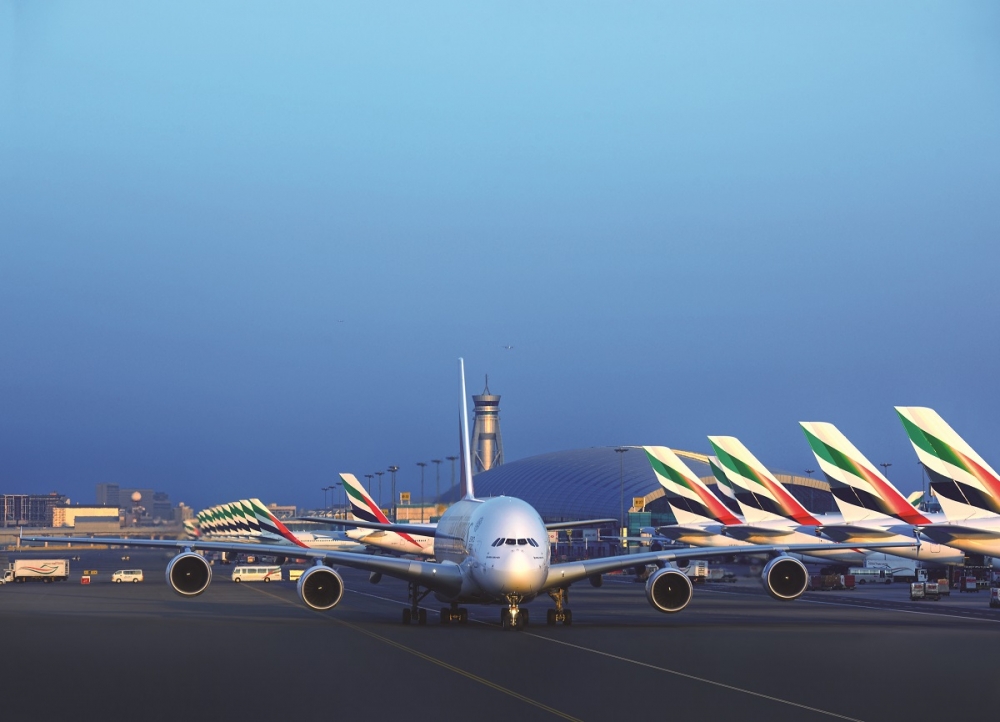Emirates predicts another challenging year after big profit slump
10 May, 2017
3 min read
By joining our newsletter, you agree to our Privacy Policy


The Emirates Group suffered a 70 per cent slump in annual profit for 2016-17 and officials are predicting another challenging year due to “hyper competition" and volatility in many markets.
The lower group result of $US670 million for the year ending March 31 came as profits from the airline operations plummeted 82 per cent to $US340 million after a record year in 2015-16.
The Dubai-based carrier’s revenue remained stable at $US23.2 billion, despite a rise in the US dollar against local currencies in most of Emirates markets that cost the company $US572m.
The airline carried a record 56.1 million passengers, up 8 per cent, and recorded a slightly lower passenger load factor of 75.1 per cent.
But passenger yields dropped 6.7 US cents per revenue passenger kilometre.
Emirates chief executive Sheikh Ahmed bin Saeed al Maktoum attributed the profit slump to “destabilising events” that included the Brexit vote, Europe’s refuges crisis and terror attacks and the new US policies affecting air travel.
Sheikh Ahmed also pointed to currency devaluation and funds repatriation issues in parts of Africa and the continued knock-on effect of a sluggish oil and gas industry on business confidence and travel demand’’
He expected that the group’s $US3.7 billion investment during the year in new aircraft and equipment, company acquisitions, new facilities and technology would strengthen its resilience, competitiveness and ability to adapt to the “volatile business climate and fast changing consumer expectations.’’
“We remain optimistic for the future of our industry, although we expect the year ahead to remain challenging with hyper competition squeezing airline yields, and volatility in many markets impacting travel flows and demand,’ he said.
Emirates cemented it position as the world biggest international carrier as it boosted capacity by 7 per cent and received 19 new Airbus A380 superjumbos and 16 Boeing 77-300ERS. Twenty-seven older aircraft were retired to bring the total fleet count at March 31 to 259 aircraft.
This was airline’s biggest ever fleet roll-over and reduced the average age of its fleet from 74 months to 63 months. It remains the world’s biggest operator of both the A380 and the B777.
New services were launched during the year to Fort Lauderdale, Hanoi, Newark, Yangon, Yinchuan and Zhengzhou There was one new freighter destination, Phnom Penh in Cambodia, and services were added to nine cities on Emirates’ existing network.
The current financial year will see new routes to Phnom Penh and Zagreb in Croatia as well as capacity upgrades to existing destinations.
The airline said revenue was well balanced across its markets with Europe contributing the highest proportion of revenue at $US6.5 billion followed by East Asia and Australia ($US6.2 billion) and the Americas ($US3.4 billion).
Revenue was unchanged or rose in all markets except Africa and West Asia and the Indian Ocean.
New product investments included an enhanced A380 Onboard Lounge due to enter service in July 2017 and a multi-million dollar deal with Thales to equip its future Boeing 777X fleet with Thales’ AVANT inflight entertainment system.
Other key initiatives for the year included a $US11 million makeover of the business class Lounge at Concourse B in Dubai International Airport, the opening of a new lounge in Cape Town, and the introduction of new onboard amenities for passengers in all classes.
Next Article
Virgin gets nod for Tiger deal

Get the latest news and updates straight to your inbox
No spam, no hassle, no fuss, just airline news direct to you.
By joining our newsletter, you agree to our Privacy Policy
Find us on social media
Comments
No comments yet, be the first to write one.
